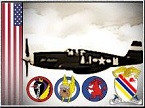rjs28023
Posts: 5175
Joined: 9/5/2012
From: Wisconsin
Status: offline

|
Thank you for updating the Generic Data in 1.08.01beta to account for Spaced Armor.
It appears you added 3mm to many vehicles when its actual thickness was 5mm. Yes, I know it was not hardened armor like the hull sides, but it did have an effect over and above an additional 5mm hardened steel plate.
The following points are quoted from a Report prepared on Spaced Armor by Aberdeen Proving Grounds in Maryland. The Report was done in November 1950 with tests done with ammunition being used in WW II.
A big point to keep in mind is that the Soviet 14.5mm PTRD AT-Rifle has a Penetration Value of 36 in WITE, and is still able to defeat the upgraded vehicles. Schürzen ended the AT-Rifle's usefulness, and further enhanced the vehicle's survivability against other weapons as well.
As such, any vehicle with Schürzen should have Side Armor of at least 37.
Quoting from the Report prepared by the Ballistic Research Laboratories of Aberdeen Proving Ground immediately below.
"The function of this relatively thin plate was to decap the attacking projectile so that it would be shattered and consequently defeated by the heavy face-hardened belt armor of the vessel".
"Spaced armor was first used in World War II by the Germans who, in 1943, fitted some of their tanks, assault vehicles, and motorized artillery mounts with auxiliary armor consisting of thin plates suspended by means of brackets along the sides of the hulls and turrets of the vehicles."
"Tactical and Technical Trends* No. 40, 16 December 1943, reported that the 1/8" to 1/4" thick side plating of the type shown above provided protection against hollow charge shells and moderately small caliber tungsten carbide cored ammunition, and may cause high velocity AP shot to deflect and strike the main armor sideways or at an increased angle."
"The function of the skirting plate is not to absorb any significant proportion of the kinetic energy of attacking projectiles, but to so affect the projectiles that their performance against the main armor is drastically reduced."
We now come to the consideration of the function of the thin skirting plate in reducing the effectiveness of projectiles which perforate it.
The skirting plate may affect projectiles in any or all of the following ways:
a. The armor-piercing cap may be removed, see Figure 3, thus Causing the shot to be shattered against the heavy main armor.
b. The shot may be turned or yawed, see Figure 4, so that it impacts the main armor at an increased angle.
c. The shot may be fractured upon passage through the skirting armor, see Figures 5 and 6. The loss of the point and the dispersal of the fragments result in a marked decrease in the penetration performance.
Although tungsten carbide has other characteristics which make it excellent for projectiles, the material is unfortunately very brittle. It is very rare that a carbide core is recovered Intact after perforating armor, even when the impacts are at 00 obliquity. As part of a program aimed at improving the performance of carbide cored projectiles, the
Watertown Arsenal arranged, some years ago, trials of the standard 90mm HVAP M304 shot against a number of spaced armor targets. The main armor consisted of 6" thick wrought homogeneous armor at 30* obliquity. The skirting plate was placed 12" in front of and parallel to the main armor,
and the variable was the thickness of the skirting plate. The results of
the tests are shown in Figure 7.
Placing a 1/2" thick plate in front of the 6" thick armor reduced the range at which the target could be defeated from 2900 yards to 350 yards!
The addition of the 1/2" thick plate more than doubled the energy required to defeat the target which was heavier by only 9-1/3%. The 6-1/2" spaced armor target provides the same protection against the 90mm, HVAP M304 shot as a single solid plate 11-1/2" in thickness. The utilization of spaced armor effects a weight savings of 43.5% in this case.
Thanks,
Randy
|
 Printable Version
Printable Version







 New Messages
New Messages No New Messages
No New Messages Hot Topic w/ New Messages
Hot Topic w/ New Messages Hot Topic w/o New Messages
Hot Topic w/o New Messages Locked w/ New Messages
Locked w/ New Messages Locked w/o New Messages
Locked w/o New Messages Post New Thread
Post New Thread